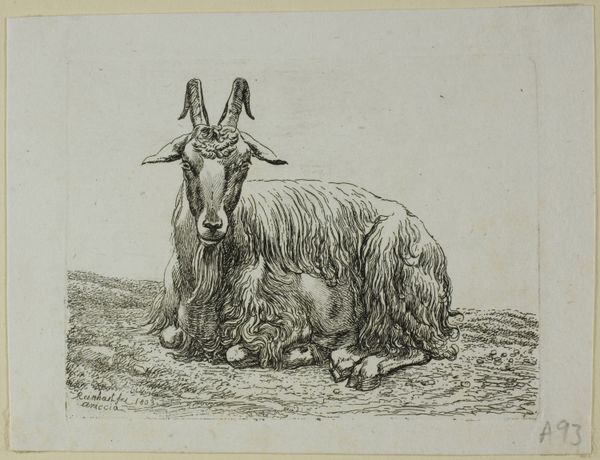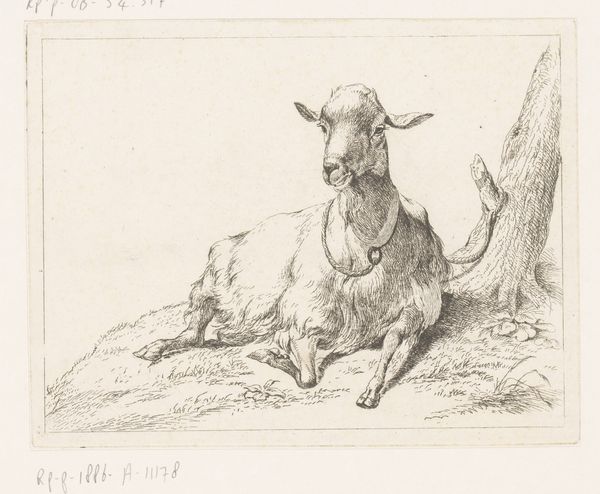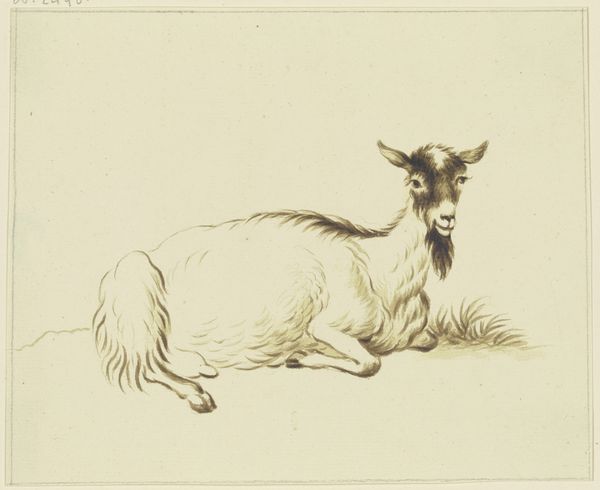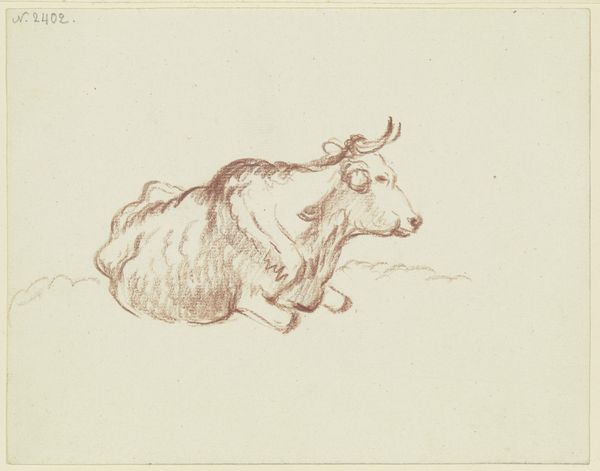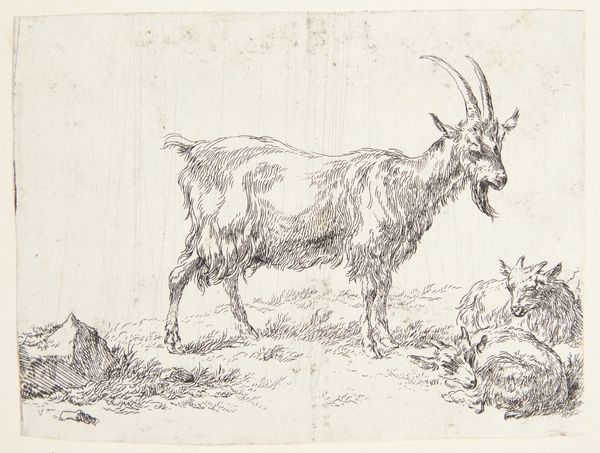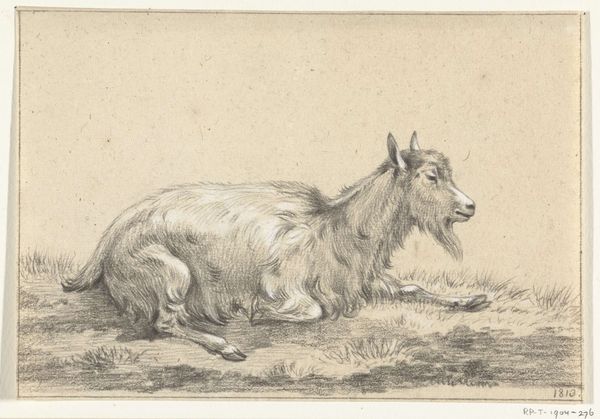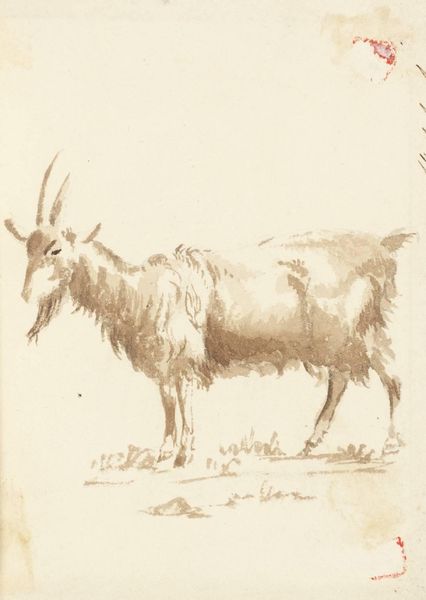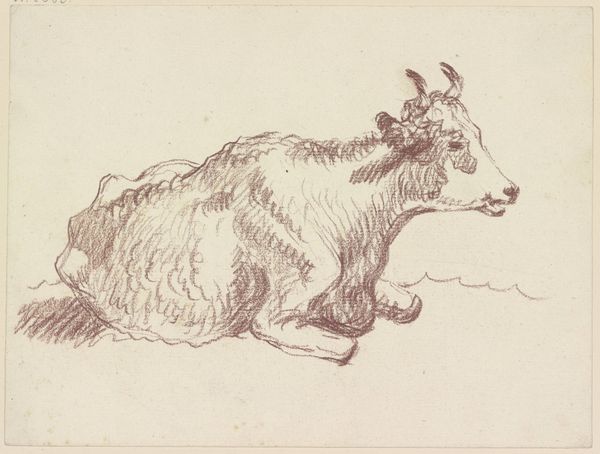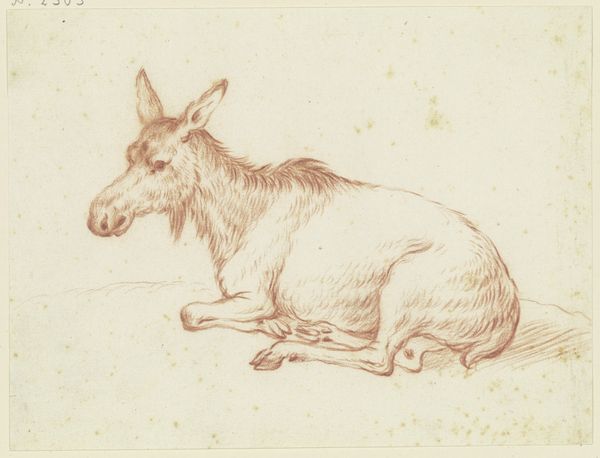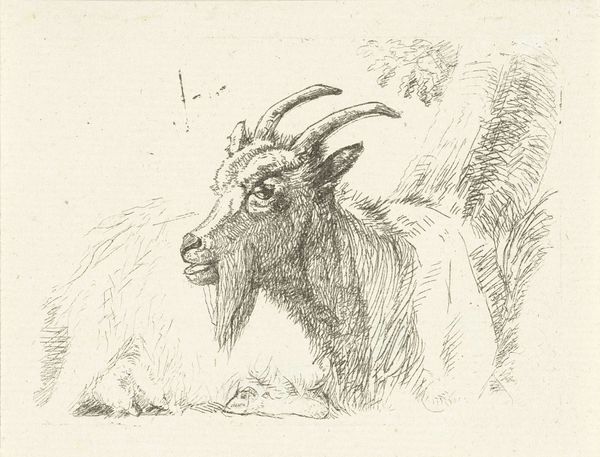
drawing, pencil
#
portrait
#
drawing
#
animal
#
pencil sketch
#
pencil
#
realism
Dimensions: height 160 mm, width 223 mm
Copyright: Rijks Museum: Open Domain
Editor: Here we have Hendrik Voogd’s “Liggende geit,” or "Reclining Goat," made sometime between 1788 and 1839. It's a pencil drawing. It has an interesting texture created by the pencil strokes; the goat appears very calm. What can you tell me about it? Curator: This piece, above all, emphasizes the importance of form and line. Consider the goat’s posture. It invites a study of geometric shapes. The triangular head juxtaposes the rounded body. Note how the artist employed delicate shading, rendering volume to this animal form while still letting the materiality of the pencil and paper show through. Editor: I see what you mean. The different pressures applied with the pencil create a sense of depth without relying on color. But isn’t the subject matter significant? Curator: While subject is relevant, formalists prioritize visual language. Here, observe how Voogd crafts a complex interplay of light and shadow. The subtle gradients build the animal's form. Note the confident, swift lines; this speaks volumes about the artist's skill. It's through this masterful execution of form that we can most fully appreciate the artwork. Editor: So you are saying that even though it's just a goat, the artistic choices are more important than the fact that it's… well, a goat. Curator: Precisely! Look past the representational aspect. Focus instead on the dialogue between line, shadow, and texture. Voogd transforms a common subject through careful observation and artistic control. Editor: That's a great perspective. I was too focused on the "what" and not enough on the "how." Thank you! Curator: And I am grateful to re-examine it.
Comments
No comments
Be the first to comment and join the conversation on the ultimate creative platform.
